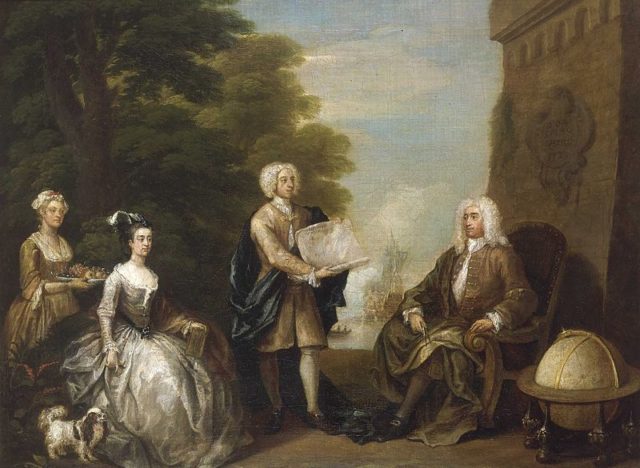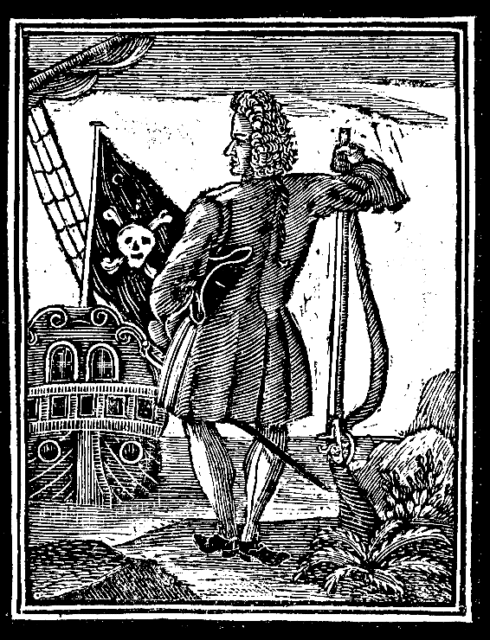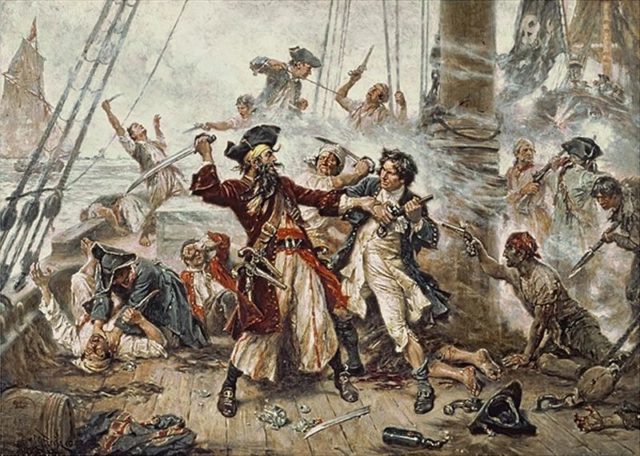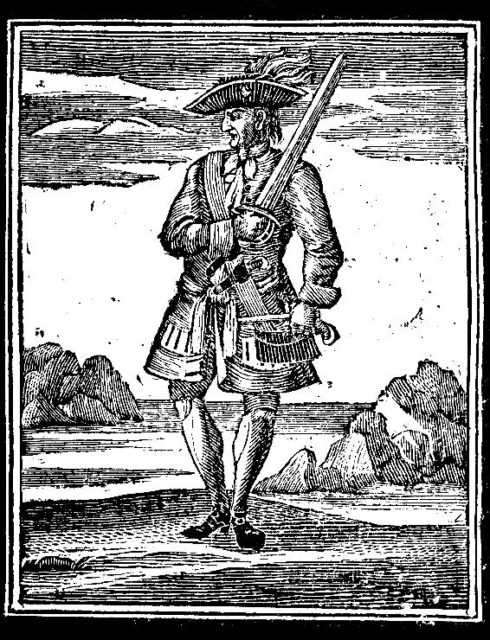At the height of the Golden Age of Piracy in the 1700s, there were thousands of pirates sailing the seas under formidable pirate captains. They didn’t have rule of the high seas for long before the Governors in the New World and Britain decided to do something about it.
The British first tried to bring these scallywags to heel. The pirates operated mainly out of bases in British Jamaica and the Bahamas, so the British tried a range of techniques, including pardons. The pardons worked for those who no longer wanted to be pirates, but the tried and true pirates such as Blackbeard and others had to be hunted down by pirate hunters. Another problem in giving pardons was that once a pirate received one, he might return to his life of crime on the high seas.
The Royal Navy in the 1700s was still in its infancy and mostly ineffective as a pirate hunting force. Often private crews were hired and there were often bounties offered for particular pirates as incentive for their capture.

A famous influence in ridding the Caribbean Sea of many of its pirates was Woodes Rogers. He was an Englishman who was a both the first Governor of the Bahamas and a privateer. He targeted pirates when he was made Governor in 1717 and the area at the time was swarming with them. Before he took the post, there was no real rule of law in the territory, and pirates gathered there and made it their home. In Nassau alone, there were an estimated 2,000 pirates. Rogers had support from England in the form of money and military might.
His first step was to offer the King’s Pardon to any pirate who would stop marauding immediately. Many pirates took this and left the seas. To handle the rest, Rogers hired many sailors and pirate hunters and even some pardoned pirates to hunt down the rest. It didn’t take long before the pirates were captured and killed in combat, or sentenced and hung for piracy. Rogers was such a force that pirates like Howell Davis simply avoided the area and the neighboring colonies altogether. Rogers battled piracy for three long years before returning to England.

Stede Bonnet the pirate was captured by Colonel William Rhett, who had been asked to assist the British Royal Navy in capturing the pirates off of South Carolina. He was a naval commander and a British plantation owner in the New World. Bonnet was cornered in the Cape Fear inlet and the battle that ensued is one of the most famous pirate battles in history. “The Gentleman Pirate” was hung after a trial, as were most of his crew.
Bonnet was cornered in the Cape Fear inlet and the battle that ensued is one of the most famous pirate battles in history. “The Gentleman Pirate” was hung after a trial, as were most of his crew.

Robert Maynard is the pirate hunter who killed Blackbeard in a fierce battle that took place on his sloop. The pirates had become so complacent at this point that no lookout had been posted. Maynard snuck up on Blackbeard’s ship, and in the subsequent battle, Blackbeard’s crew was unable to prevail or flee. Blackbeard was killed by Maynard’s crew; his head was hung on the bowsprit and his body tossed overboard.
The Governor of Jamaica in November 1720 heard that Calico Jack, otherwise known as John Rackham, was plying the ocean nearby, so he outfitted a sloop and sent Jonathan Barnet off after them. Barnet cornered Rackham off of Negril Point, and there was a short battle before the pirate ship was boarded.
On board were two female pirates, both famous in their own right – Anne Bonny and Mary Read. It is said that most of the crew hid below decks during the fight, while the two women and another crew member tried to fight off the attackers. All members of the crew were captured and sent to Spanish Town in Jamaica. All the male members of his crew were hanged, and the two women were held in prison, as they claimed they were pregnant. Mary Read died later in prison, but Anne Bonny’s fate is unknown.

Bartholomew Roberts, also known as John Roberts, was considered one of the most successful pirates of the 1700s. He captured and plundered ships off the coast of Africa and the Americas. He had started his career on the high seas after the 1718 King’s Pardons, but was not going to stop or surrender.
The pirate hunter Captain Chaloner Ogle found Roberts and his three ships at Cape Lopez. He managed to entice one pirate ship away and captured its crew.
The next day, he returned to Cape Lopez to find Roberts’ ship still anchored. Roberts tried to flee directly past Ogle but the helmsman failed to stay on track, and Ogle’s ship fired two successful broadside hits.

The grapeshot, which is used to kill a ship’s crew, hit Roberts and killed him instantly. His men wrapped his body in a shroud, weighed it down, and tossed it overboard so it could not be recovered and put on display. This was an agreement he had with his crew in the event he was killed in battle. Historians consider Roberts’ death the end of the Golden Age of Piracy. His crew fought on and eventually surrendered hours later. Fifty-two of his surviving men were found guilty and hanged for piracy, About Education, reported.
On the seas of today, there are still pirate hunters making the world a safer place. The pirates have gone high-tech, using speedboats and the internet to track their prey. They hunt tankers and freighters nowadays and are often in the news. Often they loot the ships and sometimes hold the ships and crew for ransom.

Modern naval ships patrol for the pirates in areas where they are known to appear. The military uses high-tech satellites and other modern surveillance equipment to track pirate movements and hunt them down.
Piracy is considered a million-dollar industry so it will likely be around for a long time to come.
